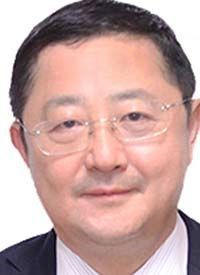Article
SCC244 Elicits Responses in METex14 Skipping–Mutated NSCLC
Author(s):
SCC244, a highly selective MET inhibitor, demonstrated durable efficacy in patients with non–small cell lung cancer who harbored MET exon 14 skipping mutations.
Shun Lu, MD, PhD

SCC244, a highly selective MET inhibitor, demonstrated durable efficacy in patients with non–small cell lung cancer (NSCLC) who harbored MET exon 14 skipping (METex14) mutations, according to data from the phase 1/2 GLORY Trial (NCT04270591) presented at the 2022 AACR Annual Meeting.1
Overall, patients who received SCC244 demonstrated an overall response rate (ORR) of 60.9% (95% CI, 48.4%-72.4%). Those who were treatment-naïve and previously treated experienced ORRs of 66.7% (95% CI, 50.5%-80.4%) and 51.9% (95% CI, 31.9%-71.3%), respectively. The disease control rate (DCR) across all 3 groups was 82.6% (95% CI, 71.6%-90.7%), 88.1% (95% CI, 74.4%-96.0%), and 74.1% (95% CI, 53.7%-88.9%), respectively. The median duration of response (DOR) was not evaluable (NE) (95% CI, NE-NE) in the treatment-naïve arm and was 5.1 months (95% CI, 2.8-8.2) and 8.2 months (95% CI, 4.8-NE) in the previously treated and overall populations, respectively. In the overall population, 71% of tumor responses were ongoing and investigators reported the potential for DOR to expand.
“The GLORY study demonstrated a high [and durable] efficacy for SCC244. Statistical hypothesis was achieved. Preliminary efficacy on brain metastases was [also] observed,” according to lead author Shun Lu, MD, PhD, a professor at Shanghai Chest Hospital, Jiao Tong University, and chief of Shanghai Lung Cancer Center.
SCC244 is a high selective MET inhibitor that can be taken orally. The multicenter, single-arm, open-label study aimed to assess a primary end point of ORR by blinded independent review committee. Secondary end points included investigator-assessed ORR, DOR, DCR, time to response (TTR), progression-free survival (PFS), 6-month PFS rate, and overall survival (OS).
Patients were required to have locally advanced or metastatic disease with a METexon14 skipping mutation. Moreover, individuals could not have received more than 2 previous systemic therapies or have not received any systemic therapies entirely. SCC244 was administered at a dose of 300 mg until disease progression or intolerance to toxicity or death.
In total, 163 patients were screened, 73 of whom were enrolled on the trial and underwent treatment. Of these patients, 36 stopped treatment due to adverse events (AEs; 11.0%), progressive disease (RECIST, 20.5%; clinical judgement, 1.4%), voluntary withdrawal (12.3%), death (1.2%), or other reasons (2.5%). Treatment is ongoing in 37 patients.
In the overall population, most patients were male (56.2%) with a median age of 69.0 years. Nearly all patients were from China (90.4%), although some were from Japan (9.6%). Most patients were either never smokers (58.9%) or had quit smoking (38.4%), and 94.5% had an ECOG performance status of 1. Notably, 87.7% of patients had locally advanced disease, 74.0% had adenocarcinoma, and 13.7% had brain metastases.
Investigators also reported that 58.9% of patients were untreated, 35.6% had previously received 1 prior line of therapy, 4.1% had 2 prior lines, and 1.4% had 3 prior lines or more. Most patients previously received prior chemotherapy (38.4%), immunotherapy (11.0%), targeted therapy (5.5%), or traditional Chinese medicine (4.1%).
In terms of SCC244’s efficacy for brain metastases, the agent yielded 8 partial responses in 10 patients. Targeted brain metastases were reduced by 30% in 5 patients. The median TTR was 1.4 months.
After a median follow-up of 5.6 months, the median PFS was NE (95% CI, 4.3-NE) in the treatment-naïve arm, 5.7 months (95% CI, 2.8-7.6) in the previously treated arm, and 7.6 months (95% CI, 4.2-NE) in the overall population.
In terms of safety, investigators reported that 97.3% of treatment-emergent AEs (TEAEs) were related to the study drug. Serious TEAEs occurred in 27.4% of patients and 28.8% of TEAEs led to dose interruptions. Additionally, 28.8% and 11.0% of patients required a dose reduction or permanent discontinuation, respectively, due to TEAEs. The most common any grade treatment-related AEs (TRAEs) included oedema peripheral (75.3%), headache (32.9%), and nausea (27.4%), with grade 3 or higher TRAEs including oedema peripheral (19.2%), neutropenia (4.1%) and rash (2.7%).
Reference
- Lu S, Yu Y, Zhou J, et al. Phase II study of SCC244 in NSCLC patients harboring MET exon 14 skipping (METex14) mutations (GLORY study) Presented at: 2022 AACR Annual Meeting; April 8-13, 2022; New Orleans, LA. Abstract CT034.








